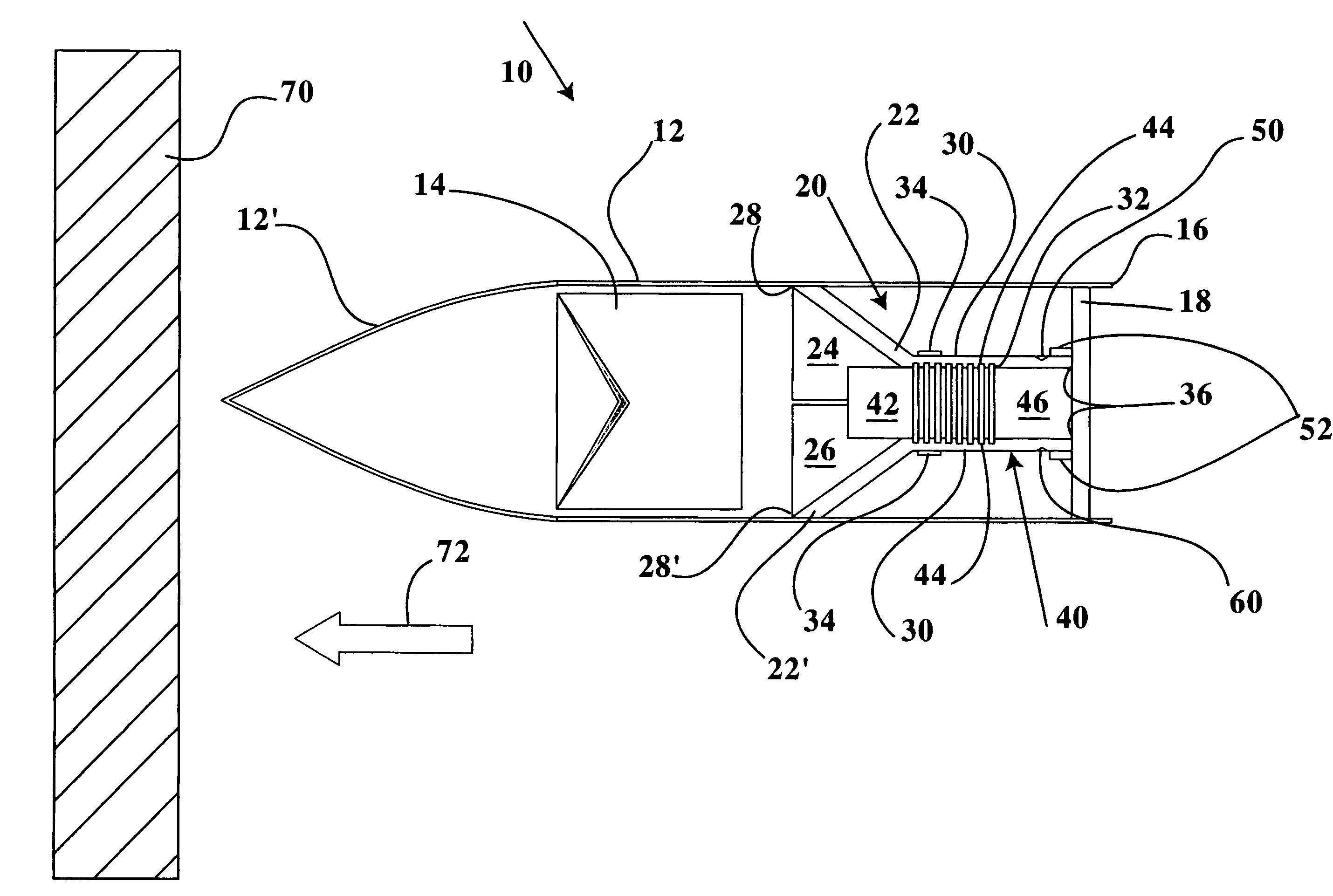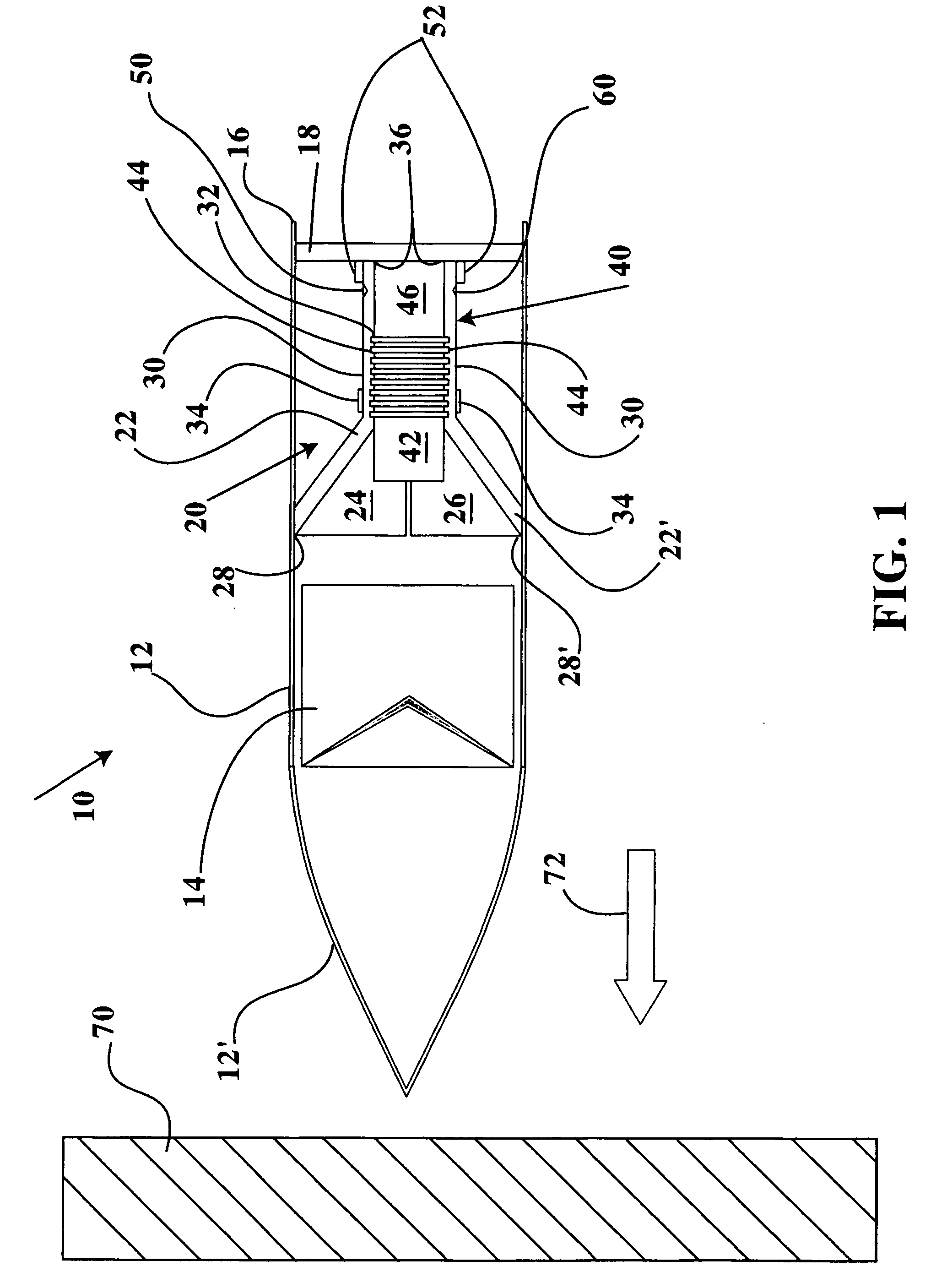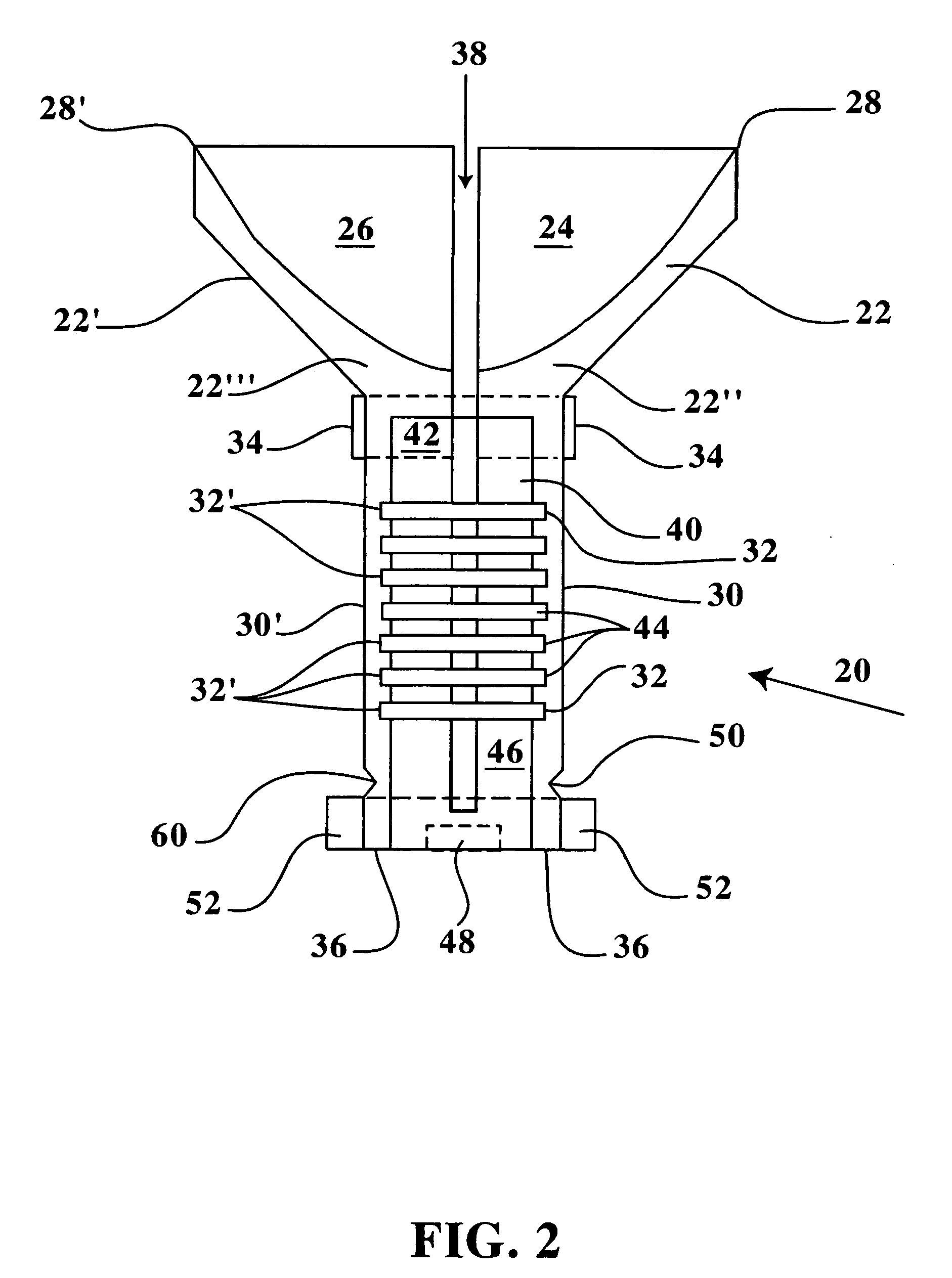Missile-borne explosive activated grenade release device
a technology of explosive activation and release device, which is applied in the direction of weapons, ammunition projectiles, projectiles, etc., can solve the problems of detonation at the target, and achieve the effect of facilitating the opening of the forward conical portions
- Summary
- Abstract
- Description
- Claims
- Application Information
AI Technical Summary
Benefits of technology
Problems solved by technology
Method used
Image
Examples
Embodiment Construction
[0022]Referring now to FIGS. 1–7B, a missile-borne release device 10 is disclosed including a forwardly disposed first explosive device 14 and a rearwardly disposed second explosive device 40 axially aligned within a munition shell 12. The release device 10 within the munition shell 12 is delivered to a hardened target surface 70 for sequential detonation of the first explosive device 14 followed by detonation of the second explosive device 40 to generate sequential and forwardly directed high pressure gas and shock waves of sufficient magnitude to breach the hardened target surface 70. The release device 10 is readily utilizable by infantry and is adaptable for release from piloted or remote controlled aircraft, and vehicles transporting and / or supporting infantry during urbane warfare. The release device 10 is further utilizable in the commercial demolition industry for destruction of hardened structures by directed delivery of multiple explosive devices having sufficient destruct...
PUM
 Login to View More
Login to View More Abstract
Description
Claims
Application Information
 Login to View More
Login to View More - R&D
- Intellectual Property
- Life Sciences
- Materials
- Tech Scout
- Unparalleled Data Quality
- Higher Quality Content
- 60% Fewer Hallucinations
Browse by: Latest US Patents, China's latest patents, Technical Efficacy Thesaurus, Application Domain, Technology Topic, Popular Technical Reports.
© 2025 PatSnap. All rights reserved.Legal|Privacy policy|Modern Slavery Act Transparency Statement|Sitemap|About US| Contact US: help@patsnap.com



